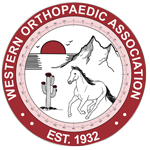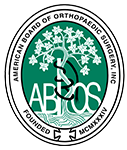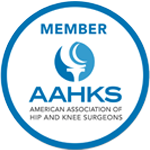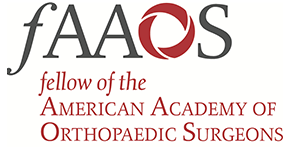Non-Operative Treatments

The natural history of joint arthritis is for the symptoms to come and go. Some days are better than others, and some days the symptoms are worse. Overall, however, the ebbs and flows continue to decline so that the good days are not as good as before, and the bad days are worse. Nonetheless, sometimes you are not ready for surgery or your doctor is not recommending it yet. In this case, there are some other ways to alleviate pain and improve mobility without surgery.
Medications
Pain relievers are usually the first choice of therapy for osteoarthritis of the shoulder. Simple pain relievers, such as acetaminophen (Tylenol), are available without a prescription and can be effective in reducing pain. Non-steroidal, anti-inflammatory medications include other over-the-counter medications such as aspirin, ibuprofen (Motrin or Advil), or naproxen (Aleve) to help reduce pain and swelling in the joint. More potent types of pain relievers are prescription-strength, non-steroidal, anti-inflammatory drugs (NSAIDs) that can be prescribed by your doctor.
Injections
Cortisone injections can provide you with pain relief and reduce inflammation. They can be very useful if there is significant swelling, but are not very helpful if the arthritis affects the movement of your joint. How long the injection works before it wears off is variable, and there is a limit to how many your doctor can give you per year.
Viscosupplementation is a treatment in which hyaluronic acid (HA) is injected into the joint. It can help joints to work properly by acting like a lubricant. There are several different types that your doctor will give in various treatment regimes. Examples of such medications include Synvisc, Orthovisc, Supartz, Hyalgan, etc.
Biologic injections, including platelet-rich plasma (PRP) injections may reduce inflammation and pain. These injections have the potential to relieve symptoms, but research is ongoing. For more information, see the Biologics page.
Exercise
An exercise routine can help increase your range of motion and flexibility as well as help strengthen the muscles in your legs. Exercise is often effective in reducing pain and improving function. Unfortunately, in the setting of advanced arthritis (bone-on-bone), exercise can sometimes increase pain in your shoulder joints. Your physician or a physical therapist can help develop an individualized exercise program that meets your needs and lifestyle.
Physical Therapy
Physical therapy to strengthen the muscles around your joint may help absorb some of the shock imparted to the joint. Physical therapy can help to reduce the pain, swelling, and stiffness of osteoarthritis, and it can help improve joint function. It can also make it easier for you to walk, bend, kneel, squat, and sit.
Alternative Therapies
Examples of alternative therapies include the use of acupuncture and magnetic pulse therapy. Acupuncture uses fine needles to stimulate specific body areas to relieve pain or temporarily numb an area. It is used in many parts of the world, and evidence suggests that it can help ease the pain of arthritis. Magnetic pulse therapy is painless and works by applying a pulsed signal to the shoulder, which is placed in an electromagnetic field. Data on this is somewhat inconclusive.





